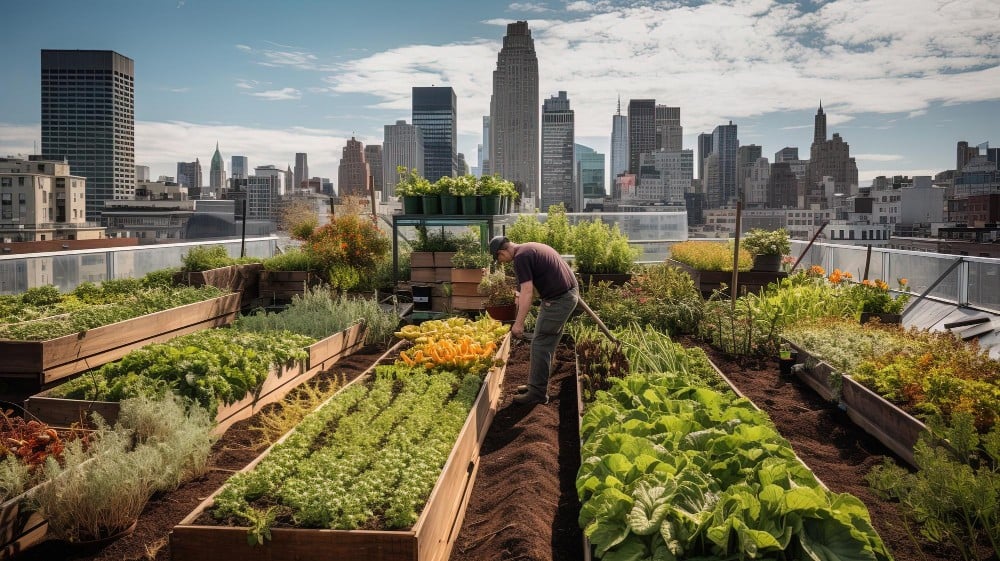As the world faces increasing environmental challenges, many of us are seeking ways to live more sustainably and reduce our ecological footprint. For homesteaders in Iowa, where land and natural resources are integral to daily life, embracing change begins right in our own yards. On May 26th, we celebrate “Reduce Your Lawn Day”, a community-driven initiative encouraging homeowners and homesteaders alike to reconsider traditional notions of lush, expansive lawns and explore more sustainable, eco-friendly outdoor spaces.

The History and Cultural Significance of Lawns
To understand why reducing lawn size is meaningful, it’s helpful to look at the cultural history of lawns. Originating centuries ago, particularly among European aristocracy, lawns became symbols of wealth and social status. A well-maintained, expansive green lawn showcased land ownership, leisure, and a certain lifestyle that many aspired to emulate. During the 20th century, especially in post-World War II America, the suburban expansion made large lawns a standard feature, symbolizing the ideal of the “American Dream.”
However, as our understanding of ecology and sustainability has grown, so has awareness of the environmental costs associated with maintaining vast grassy expanses. Lawns typically require significant inputs of water, fertilizers, and pesticides—resources that are increasingly scarce and costly, especially during drought-prone periods.
Why Consider Reducing Your Lawn?
For homesteaders in Iowa, reducing lawn size can be an effective and practical step toward sustainability. Here are some compelling reasons:
- Environmental Benefits
Traditional lawns are monocultures that offer limited habitat for native pollinators, insects, and birds. They often rely heavily on water, fertilizers, and chemical treatments, which can pollute local waterways and degrade soil health. By decreasing the lawn area, you can promote biodiversity by planting native plants, flowers, and wildflowers that support local wildlife. - Water Conservation
Iowa, like many parts of the Midwest, experiences variable rainfall and occasional droughts. Maintaining large lawns with frequent watering is unsustainable and wastes precious resources. Reducing lawn size minimizes water use, helping conserve this vital resource. - Cost Savings
Lawn maintenance—mowing, fertilizing, pest control—can be costly and time-consuming. Downsizing your lawn frees up time and money that can be redirected toward sustainable gardening practices, growing food, or enhancing your homestead. - Enhanced Aesthetics and Utility
Replacing traditional lawns with vegetable gardens, orchards, herb beds, or natural areas creates functional space for food security and self-sufficiency. These areas provide fresh produce, medicinal herbs, and habitat for beneficial insects, adding value to your homestead. - Improved Urban and Rural Livability
Smaller lawns mean more open space for recreation, community gathering, or natural habitat. For rural homesteads, this might mean more pasture or woodland, enhancing the overall landscape and ecosystem health.
Practical Steps to Reduce Your Lawn
Participating in Reduce Your Lawn Day doesn’t mean abandoning your outdoor space; it’s about making intentional choices to transform it into a more sustainable, versatile, and beautiful environment.
Evaluate Your Lawn: Start by inspecting your current lawn. Identify areas that could be converted into vegetable beds or native plant patches. Consider which parts of your grass can be replaced with edible or ecological landscaping.
Plan for Native Plants: Incorporate native prairie grasses and wildflowers that are adapted to Iowa’s climate. These plants require less water and maintenance and support local pollinators like bees and butterflies.
Create a Garden Zone: Convert parts of your lawn into vegetable patches, orchards, or herb gardens. This increases food self-sufficiency and reduces dependency on store-bought produce.
Establish Perennial Climates: Use perennials and ground covers that stabilize soil, reduce weeds, and require minimal maintenance, creating a natural and productive landscape.
Install Mulching and Water Harvesting: Use mulch around plants to retain moisture, and consider rain barrels or other water harvesting systems to decrease irrigation needs.
Involve the Community: Encourage neighbors and local homesteading groups to participate. Sharing experiences and resources can amplify the benefits and foster community resilience.

Celebrating Reduce Your Lawn Day
On May 26th, community members across Iowa are encouraged to celebrate Reduce Your Lawn Day. Here are some ideas:
Host a Workshop or Swap: Invite neighbors to exchange native plants, seeds, or gardening tips focused on sustainable landscaping.
Organize a Community Clean-up or Transformation Day: Work collectively to convert sections of lawns into productive or natural landscapes.
Share Your Progress: Document before-and-after photos of your yard transformations on social media using a dedicated hashtag. Inspire others in your community to participate.
Learn and Educate: Attend or host educational sessions about native landscaping, composting, water conservation, and permaculture principles.


Leave a Reply